- Home
- Rick Mofina
If Angels Fall (tom reed and walt sydowski) Page 2
If Angels Fall (tom reed and walt sydowski) Read online
Page 2
“Wake up, Reed. I brought your medicine.”
A steaming cup of coffee was set before him, the aroma mingling withthe scent of Obsession. “Anything shaking, Tommy?” Molly Wilson settled in ather cubicle, next to his, her bracelets clinking.
“A drunk knifed by a whore.” He sipped the coffee. “Thanks.”
Wilson was hired four years ago from a small Texas daily. She had amaster’s degree in English literature. A relentless digger, she was a strongwriter. Her brunette hair was cut like Cleopatra’s, she had perfect teeth, andalways smelled good.
“Why are you here, Wilson? It’s your day off.”
She switched on her terminal, flipped open a notebook, and begantyping. “Got to finish a feature for Lana. She moved up my deadline.”
Reed grunted.
“Thanks for asking, Tom. It’s about men who kill, and the women wholove them. Hey, you’re being naughty. Can’t leave that Donner story alone.”
Reed said nothing.
“Why do you keep doing this to yourself, Tom?”
“Do what?”
“Forget the story. The police fried you because they screwed up andneeded a scapegoat. Benson suspended you because he needed a scapegoat too. Itwas only a week. Everybody knows he put the entire thing on your shoulders. Itwas a year ago. Forget it and move on.”
“I can’t.”
The muted clatter of the Star’s police scanners flared, thenfaded. Reed and Wilson glanced across the newsroom at the summer internmonitoring transmissions.
“Tom, it wasn’t your fault.”
“Yes, but if that dipshit in homicide had explained how Wallace’sprints were on the evidence, like you begged him, you would have backed off.You wanted more time on the Sunday School teacher stuff, but Benson was hornyfor the story. They pushed hard, too. We will never know the truth, Tom.”
Wilson’s eyes were sympathetic. She resumed typing. Reed went backto the clippings.
“Why do you have the Donner file, anyway?”
“Anniversary’s coming up. I’m going to pitch a feature.”
Wilson rolled her eyes. “You really are nuts. This rag is not goingto let you do that. They’ll pass it to a G.A., or some dink in Lifestyles.Besides, isn’t Tanita’s mother in hiding?”
“I have an idea, but-“
The scanners grew louder.
They turned to the small office tucked way in the far corner of thenewsroom. The “torture chamber.” A glass-walled room with twenty-four scannersmonitoring hundreds of emergency frequencies in the Bay Area. The incessantnoise inspired the room’s name. Experienced listeners kept the volume low, butwhen a major incident broke, the sound increased.
“Something’s happening,” Wilson said.
Simon Green, a summer intern, was monitoring the radios. His facewas taut when he stood, jotted a note, then yelled at Al: “Child abduction offBART! Balboa Park! They’re stopping the trains!”
Booth grimaced at the newsroom. No one on, except Reed.
“Are you clear?”
Reed nodded.
“Take it. Wilson, stick around, you might get overtime.”
Across the newsroom, the weekend photo editor radioed a photographerroaming the city to rush to the Balboa Park BART station.
Reed slipped on his jacket, grabbed one of the Star’s cellphones. “I’ve got number three, call me with updates, Molly.”
“This is eerie. Balboa Park.”
Tanita Marie Donner was abducted from the Section 8 housing complexwhere her teenage welfare mother lived. In Balboa Park.
THREE
Sydowski and his father had good seats at the Coliseum. Thirty rows up from first. But the gamelacked zeal. Entering the eighth, with the A’s up by seven over the Yankees,was not exciting baseball.
Sydowski was stiff and hungry.
“Hey, old man,” he said in Polish. “I’m going to get something toeat. You want anything?”
“Sure, sure. Popcorn,” his father said.
Sydowski patted his father’s knee and headed for the concessionstand. Sydowski had not wanted to come to the game. He accepted tickets becausehis boss insisted. Sydowski’s old man loved seeing the A’s at the Coliseum, butwould never ask to be taken because he figured the job kept his son busy.
Standing in line, Sydowski reminisced about the old days. WheneverBoston played the A’s, he would drive across the Bay Bridge to Oakland to payhomage to Carl Michael Yastrzemski, a three-time American league battingchampion. Yaz took his third title by posting.301, in an era where pitchersdestroyed batting averages.
That was perseverance.
That was 1968. The year Oakland got the A’s and the San FranciscoPolice Department got Wladyslaw Sydowski.
Had it been that long?
“You know you can take your pension any time, Walt,” his boss,Lieutenant Leo Gonzales, often reminded him.
Sydowski couldn’t. Not yet. What would he do?
His wife, Basha, had died of Parkinson’s six years ago. The girlswere grown, had their own children, and had moved away. He had John, hiseighty-seven-year-old father, to look after. His old man was something. APolish potato farmer and barber he had kept his family alive in a work campduring the war by cutting hair for Nazi officers. Sydowski’s old man taught himhow to listen, how to read people. Now John lived happily alone at Sea BreezeVillas in Pacifica, tending a vegetable garden, following the A’s. He refusedto move in with Sydowski, who lived by himself in the Parkside house where heand his wife had raised their daughters and where he now raised championcanaries.
“Sir? That’s four dollars.”
Sydowski smiled, showing two gold-crowned teeth as he dug out somecash. The teenage girl smiled back. At six-foot-three, with a solidtwo-hundred-pound frame, dark complexion, and wavy salt-and-pepper hair,Sydowski was a handsome man.
He knew the hotdog would take a toll on his chronic heartburn, butwhat the hell? He smothered it with mustard, relish and onions as the oldquestions surfaced. What would he do if he retired? He was a cop. A homicideinspector. It was his life. To some, he was one of the SFPD’s best; to othershe was “the arrogant Polack cocksucker.” While he was traditionally assigned tobreak in new detectives, he maintained the detail’s highest clearance rate.Senior clicks told rookies Inspector Sydowski knew killers because he was one.
It was near the end of the war, Sydowski was what? Eight or nine?His family was working on a farm in southeastern Germany when he came up on adrunken Nazi soldier raping his twelve-year-old sister behind a barn. Sydowskigrabbed the soldier’s Luger and held it to the sweating man’s temple, forcinghim to kneel and beg for his life. Then he pulled the trigger, scatteringmaster race brain matter against the pigsty.
That was another life. Sydowski had erased the memory of it, orthought he had. Somehow the rage he felt then, rage he thought he would neveragain experience, had returned when he was given the case of a two-year-oldgirl. The worst part of the job was always the murders of babies. Looking downat their tiny bodies, knowing they never had a chance, that this world hadfailed them, and it was his job to avenge their deaths. Remembering how hewould go home brokenhearted, kiss Basha and the girls, and tell them it wasanother routine day.
Over the years he had managed to remain detached from his cases, enoughso that he could do the job. Although he won most, he accepted losing some. Hehad no choice. He couldn’t solve them all. But the abduction and murder ofTanita Donner was different. It was a year ago. He was the primary and hecouldn’t close it. At one stage, he felt he was close. Now he had nothing. Thething refused to be solved and it ate him up. Leo had suggested he let fresheyes go over it, that he concentrate on other files for a time. That didn’tlast. He had given a piece of his soul to the Donner case. How could he forgetabout that baby for one goddamned second?
It was raining when he arrived in Golden Gate Park with a rookie andlooked into the bag. He remembered the familiar foul smell, the flies andmaggots, how she was so white, the gash across her tiny neck,
and how hereyes, those beautiful little eyes, were open and staring at him. Into him.Feeling something break inside, making him ache at that very moment to hold herto his chest, in front of all the cops, reporters, and rubberneckers, allstanding there.
Sydowski had crossed the emotional line with Tanita’s file. At themorgue, seeing her doll-size corpse, then taking Tanita’s teenage welfaremother and grandfather from their Balboa apartment to identify her. How hecaught the mother after she collapsed upon seeing her baby, hearing a groanfrom the grandfather, who covered his face with his hands. He was dying ofcancer and had already lost his legs. Remembering how his wheelchair was heldtogether by coat hangers, how the mother let her crumpled snapshot of Tanitafall to the floor and started screaming, and how Sydowski looked to theceiling.
He knew he would never give up on this one, never let it go. He hadtouched Tanita’s coffin at her funeral, vowing to find her killer.
“Here you go, Pop.” Sydowski handed a bag of popcorn to his old man,then took a couple of bites from his dog and tried getting back into the game.But he’d lost his concentration.
At the outset, the department had put half the detail on Donner. Itwas a green light. The FBI assigned a couple of humps to inflict itsjurisdiction. The senior agent was Merle Rust, a soft-spoken, twenty-year fedwith a three-inch scar on his chin from a bullet that grazed him during ashootout with The Order near Seattle in 1984. Rust was as fond of chewingtobacco as he was of his young partner, Special Agent Lonnie Ditmire, aby-the-book grad straight from the academy cookie cutter. He had anall-American smile and believed all municipal police were bush.
Despite the inevitable friction, everyone worked overtime. It wasalways that way with child murders. They hauled in suspects, Quantico kickedout a profile. They flashed information on the big screen of Candlestick Parkand offered a reward. As weeks, then months, passed, two network TV crime showsfeatured the case. The commission turned up the heat for an arrest. Posterssprouted in the Bay Area. But they had squat, until months into the file whensomething broke.
A beat cop, searching for tossed drugs in the playground in DoloresPark, found Tanita’s diaper and the weather-worn Polaroids of two men holdingher. The items were hidden in a bag among some shrubs. True to the profile: Twopeople were involved in the child’s abduction and murder. One of the picturedmen was Franklin Wallace, a Sunday school teacher who lived near Tanita’shousing project. Latents on the diaper matched his. They ran them anddiscovered Wallace had been convicted ten years ago of molesting a little girlin Virginia. Nothing was known about the second suspect, a tattooed man who wasmasked in the snapshots.
They kept the break secret, returned the items to the shrubs andwere about to surveil the site with the FBI when Sydowski got a call from TomReed at the Star, a reporter he knew and respected. Reed was on to thebreak in the case and wanted information for a story. Sydowski cursed tohimself over what he suspected was a dangerous leak, jeopardizing theinvestigation.
“What do you know, Reed?”
“Franklin Wallace is your boy. His prints are on her diaper andyou’ve got a picture of him with her. He’s a Sunday school teacher in theprojects with priors. A diddler from Virginia. Is that right?”
Reed was on the money. Sydowski had to be careful.
“Where did you get this?”
“A call out of the blue this morning.”
“Who?”
“Get serious, Walt, you know I’d never reveal a source.”
Sydowski said nothing.
Reed thought it over quickly, and lowering his voice, said, “If Ihelped you with information on the tip, do I get a jump on the story, Walt?”
“No deals.”
Reed sighed. Sydowski heard a pen tapping, heard Reed thinking.
“I don’t know who called. It was a man. Lasted a few seconds. Has tobe somebody sick of the commission’s shrieking, a cop likely.”
“You tape it?”
“No, it was too quick. So, am I on the right track, Walt?”
“No comment. And I wouldn’t write a word just yet.”
“Come on.”
“We never had this conversation.”
There was something triumphant in Reed’s silence.
“I’ll take that as confirmation.”
“Take it any way you like, I never spoke to you.”
The leak detonated a shitstorm at the D.A.’s office and at GoldenGate Avenue. Reed had called the D.A.’s office, seeking official confirmationfor his tip. He got nothing.
Wallace had not yet been formally questioned. Reed was forcing theirhand. Rust, Ditmire, and Rich Long, an assistant district attorney, descendedon the Hall of Justice and debated the merits of picking up Wallace without yethaving built a case against him or his mystery partner. Sydowski wanted Wallacegrabbed right away. The agents wanted Wallace under surveillance so he couldlead them to his partner. And could they stop Reed’s story? More importantly,Ditmire interjected directly to Sydowski, how many other reporters knew?
Offended at the implication that he was the leak, Sydowski stood toconfront his accuser, his chair scraping across the floor.
“Take it easy, Walt,” Rust said.
At that moment, they received word that Wallace was dead. Shothimself in the head after Reed showed up on his doorstep, asking about TanitaMarie Donner and his record in Virginia. Wallace left a note proclaiming hisinnocence. Nothing in his house linked him to Tanita’s murder.
Long snapped his pencil in two, closed his briefcase, and left withRust and Ditmire in tow, cursing Sydowski.
The next day, Reed’s story identifying Wallace as the chief suspectin Tanita Marie Donner’s murder, ran on the front page of the Star.Thankfully, Reed didn’t know about the second suspect. The John Doe with thetattoos. The D.A. and the feds decided the case might be salvaged if theydownplayed Reed’s article by saying Wallace was never a suspect, that he waschecked because he knew the victim and because of his old record. It wasroutine and he was cleared long ago, they said. The San Francisco Starwas writing fiction, again. Sydowski loathed this tenuous approach, but it wasall they had.
But it didn’t matter. The investigation crumbled. Then it got worse.Wallace’s widow sued the paper, then slapped Reed’s face in front of all thecamera during a news conference. Reed was demoted, or some shit like that.Sydowski grilled him half a dozen times about details of the call, then theylost touch.
Eventually, the number of bodies on the case dwindled. Sydowski sawless of Rust and Ditmire. Everyone knew it was Sydowski’s file. They left himalone. After Wallace’s suicide, he had painstakingly rebuilt pieces of thecase. No one envied him. But they understood.
After his darkest days, he would go home and sit in his aviary,listen to his birds and think. What was he doing wrong? He came to the hall atall hours, worked at the computer, reread files, and went out on interviews.Nothing clicked.
That had been his year since Tanita Marie Donner’s murder, a year inwhich he rarely took a day off. But he had today. And sitting with his old manat the Coliseum watching the A’s and Yankees felt good. For a few hours hetried to give his mind a rest. As he chewed on the last of his hotdog, heconsidered going back for another.
Beep! Beep! Beep! Beep!
He switched off his pager, went to a phone and called the duty crewat the hall.
“Homicide, Jackson.”
“It’s Sydowski.”
“Walt, we got a boy abducted just now by a male stranger.”
“Got a body?”
“Nope.”
“No body. That’s General Works. Why call me?”
“It’s an order. Comes from the brass. Leo wants you in on this withGeneral and the feebees, right from the get-go. The kid was grabbed from hisfather on BART at Balboa.”
Balboa.
“It’s looking bad, Walt.”
Sydowski felt his heartburn flare. “Balboa?”
“They’re setting up at Ingleside Station on John Young.”
“Okay, I’m coming f
rom the Coliseum.”
Sydowski hung up and found a uniformed Oakland police officer. Heshowed him his badge, asked him warmly to make sure his old man got a cab toPacifica, then gave him several crumpled bills for the fare.
“Consider it done,” the cop said.
Sydowski returned to his old man.
“I got to go to work, Pop.” He pointed to the officer. “This guywill get a cab home for you.”
His father turned to him, nodded, and adjusted his ballcap.
“Sure, you go to work. You do a good job.”
Driving across the Bay Bridge to San Francisco, grateful to beat theballgame traffic, Sydowski was struck by one thought. He wondered if Reed everto around to figuring out that short, anonymous call he got nearly a year agohad come from Tanita Marie Donner’s killer.
FOUR
Tom Reed drove southfrom downtown in a staff car, a Ford Tempo, bearing The San Francisco Star’sred, white, and blue banner and the logo: WE’VE GOT SAN FRANCISCO’S STORY.
Talk about cruel irony. He wanted to do an anniversary piece onTanita Marie Donner’s abduction and murder. To set the record straight. Toredeem himself. Now this happens. In Balboa.
His knuckles whitened on the steering wheel. Passing a lumberingmotor home from Utah on 101, he couldn’t shake the Donner story and a millionother questions. If today’s case was real, would the paper leave him on it? Couldhe handle it again? Sure. He had nothing left to lose. He had alreadysacrificed his family to the Donner story.
“We’ve lost each other, Tom,” Ann had said the last time they wereout, weeks after Wallace’s suicide. It was a place in Sausalito, with a view ofSan Francisco’s skyline and a harpist plucking a requiem to their marriage. Annwas right. Something between them had died, a fact he refused to admit. Hefingered a spoon and met her eyes, shining in the candlelight like they did ontheir wedding day.
“Tell me, Ann. Tell me how you’ve lost me.”

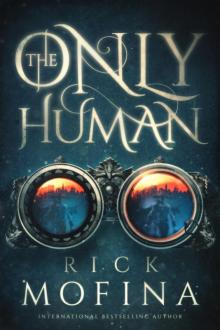 The Only Human
The Only Human Tom Reed Thriller Series
Tom Reed Thriller Series![[Tom Reed and Walt Sydowski 04.0] No Way Back Read online](http://i1.bookreadfree.com/05/tom_reed_and_walt_sydowski_04_0_no_way_back_preview.jpg) [Tom Reed and Walt Sydowski 04.0] No Way Back
[Tom Reed and Walt Sydowski 04.0] No Way Back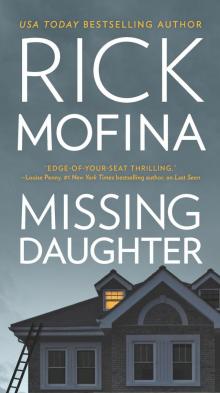 Missing Daughter
Missing Daughter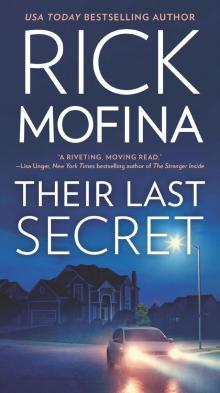 Their Last Secret
Their Last Secret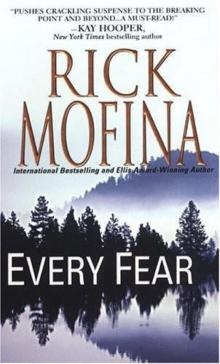 Jason Wade - 02 - Every Fear
Jason Wade - 02 - Every Fear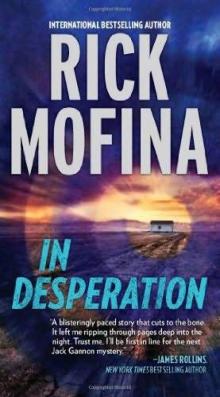 In Desperation
In Desperation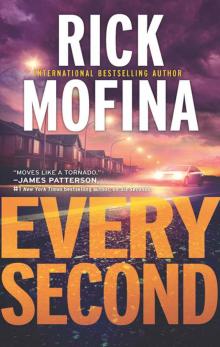 Every Second
Every Second Full Tilt
Full Tilt Search for Her
Search for Her The Last Pursuit
The Last Pursuit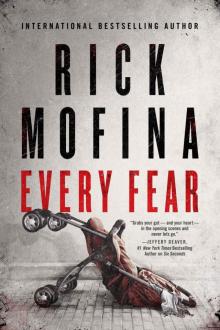 Every Fear
Every Fear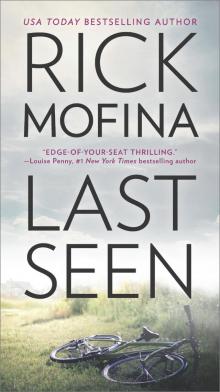 Last Seen
Last Seen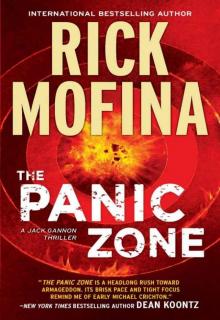 The Panic Zone
The Panic Zone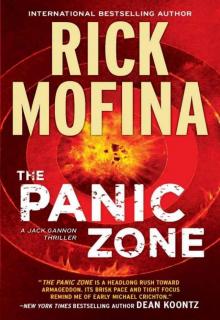 The Panic Zone jg-2
The Panic Zone jg-2 Free Fall
Free Fall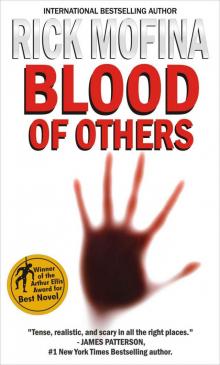 Blood of Others
Blood of Others![[Jason Wade 02.0] Every Fear Read online](http://i1.bookreadfree.com/i1/03/31/jason_wade_02_0_every_fear_preview.jpg) [Jason Wade 02.0] Every Fear
[Jason Wade 02.0] Every Fear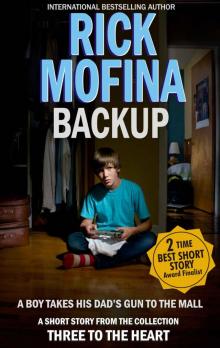 Backup
Backup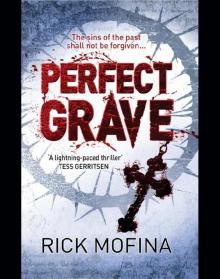 Perfect Grave
Perfect Grave Into the Dark
Into the Dark Whirlwind
Whirlwind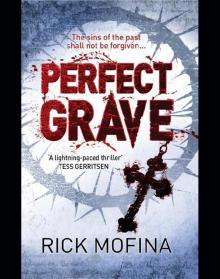 Perfect Grave jw-3
Perfect Grave jw-3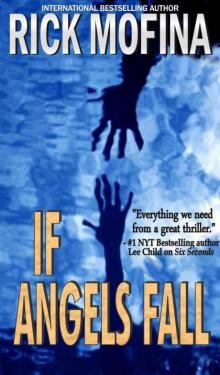 If Angels Fall (tom reed and walt sydowski)
If Angels Fall (tom reed and walt sydowski)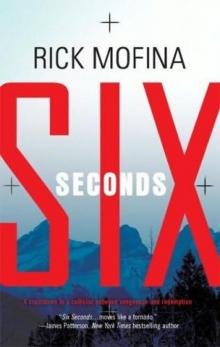 Six Seconds
Six Seconds If Angels Fall
If Angels Fall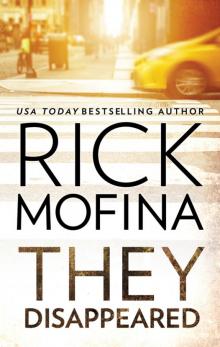 They Disappeared
They Disappeared Vengeance Road
Vengeance Road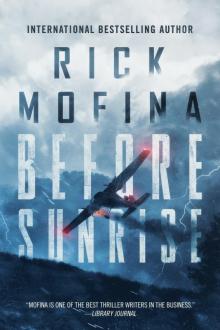 Before Sunrise
Before Sunrise A Lifetime Burning in a Moment
A Lifetime Burning in a Moment Blood Red Rings (Dangerous Women & Desperate Men)
Blood Red Rings (Dangerous Women & Desperate Men) As Long As We Both Shall Live (Dangerous Women & Desperate Men)
As Long As We Both Shall Live (Dangerous Women & Desperate Men)![[Tom Reed and Walt Sydowski 01.0] If Angels Fall Read online](http://i1.bookreadfree.com/i2/04/12/tom_reed_and_walt_sydowski_01_0_if_angels_fall_preview.jpg) [Tom Reed and Walt Sydowski 01.0] If Angels Fall
[Tom Reed and Walt Sydowski 01.0] If Angels Fall Cold Fear
Cold Fear Be Mine
Be Mine Three Bullets To Queensland
Three Bullets To Queensland